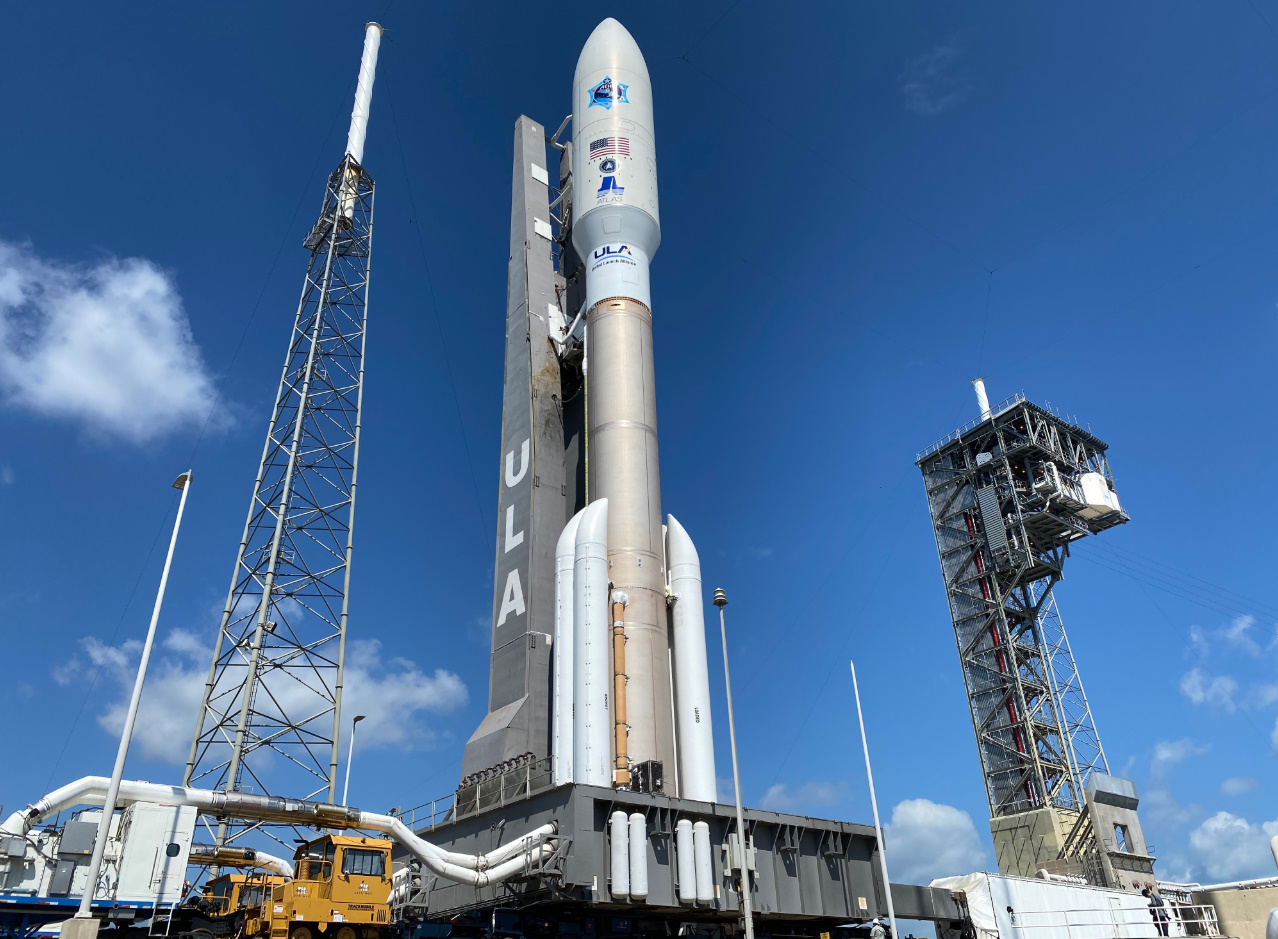ULA announces delay of NROL-107 launch, marking the final Atlas NRO mission
United Launch Alliance (ULA) has postponed the launch of the classified NROL-107 Silent Barker mission due to safety concerns and the approaching Tropical Storm Idalia. The mission is a joint project between the National Reconnaissance Office (NRO) and the United States Space Force, aimed at providing the capability to search, detect, and track objects from a space-based sensor for timely custody and event detection. Silent Barker will form a constellation of satellites used for tracking other countries’ activities in geostationary orbit, departing from the current ground-based tracking method. The launch requirements specify that the payload will be launched into a near-geosynchronous orbit, and the exact number of satellites onboard is classified. The NRO will operate the constellation, which is expected to be operational by 2026.
The Atlas V rocket, in its most powerful active configuration (Atlas V 551), will be used for this mission. The rocket underwent a wet dress rehearsal (WDR) to ensure all systems were functioning properly before being rolled back to the vertical integration facility for payload installation. The payload, NROL-107, was then lifted onto the launch vehicle before the complete stack returned to the launch pad.
On launch day, the Atlas V rocket will be loaded with cryogenic propellants, including liquid oxygen and liquid hydrogen. The RD-180 engine on the first stage burns RP-1 fuel and liquid oxygen, while the Centaur upper stage’s RL-10C-1-1 engine burns liquid hydrogen and liquid oxygen. Both engines have a long history of successful use in previous Atlas rockets. The countdown will enter a planned hold at T-4 minutes for a final go/no-go poll before proceeding with the launch.
During the ascent, the Atlas V rocket will go supersonic just over 35 seconds after liftoff, reaching max-Q (maximum dynamic pressure) only 11 seconds later. The SRMs (solid rocket motors) will burn out and be jettisoned at one minute and 44 seconds after launch. The payload fairing will be jettisoned at T+3 minutes and five seconds, exposing the Centaur upper stage and the Silent Barker payload to space. The Centaur forward load reactors will also be jettisoned shortly after. After the first stage burns out and separates, the Centaur stage will perform multiple burns to bring the payload into a low-Earth parking orbit and then into a geostationary transfer orbit. Near apogee, the Centaur will perform its final burn to boost Silent Barker into a near-geosynchronous orbit, where the satellites will deploy.
This mission, NROL-107, will be the 98th for Atlas V and the second this year for United Launch Alliance. It also marks the end of Atlas V’s involvement in NRO payloads, as future reconnaissance missions will fly on ULA’s upcoming Vulcan rocket.
In summary, the delay in the launch of the NROL-107 Silent Barker mission was due to safety concerns and an approaching tropical storm. This joint project between the NRO and the United States Space Force aims to provide advanced tracking capabilities from a space-based sensor. The Atlas V rocket, in its most powerful configuration, will be used for this mission. The launch timeline includes various stages, such as the jettisoning of the SRMs and the payload fairing, before reaching the desired orbit. This mission marks the end of Atlas V’s involvement in NRO payloads.
